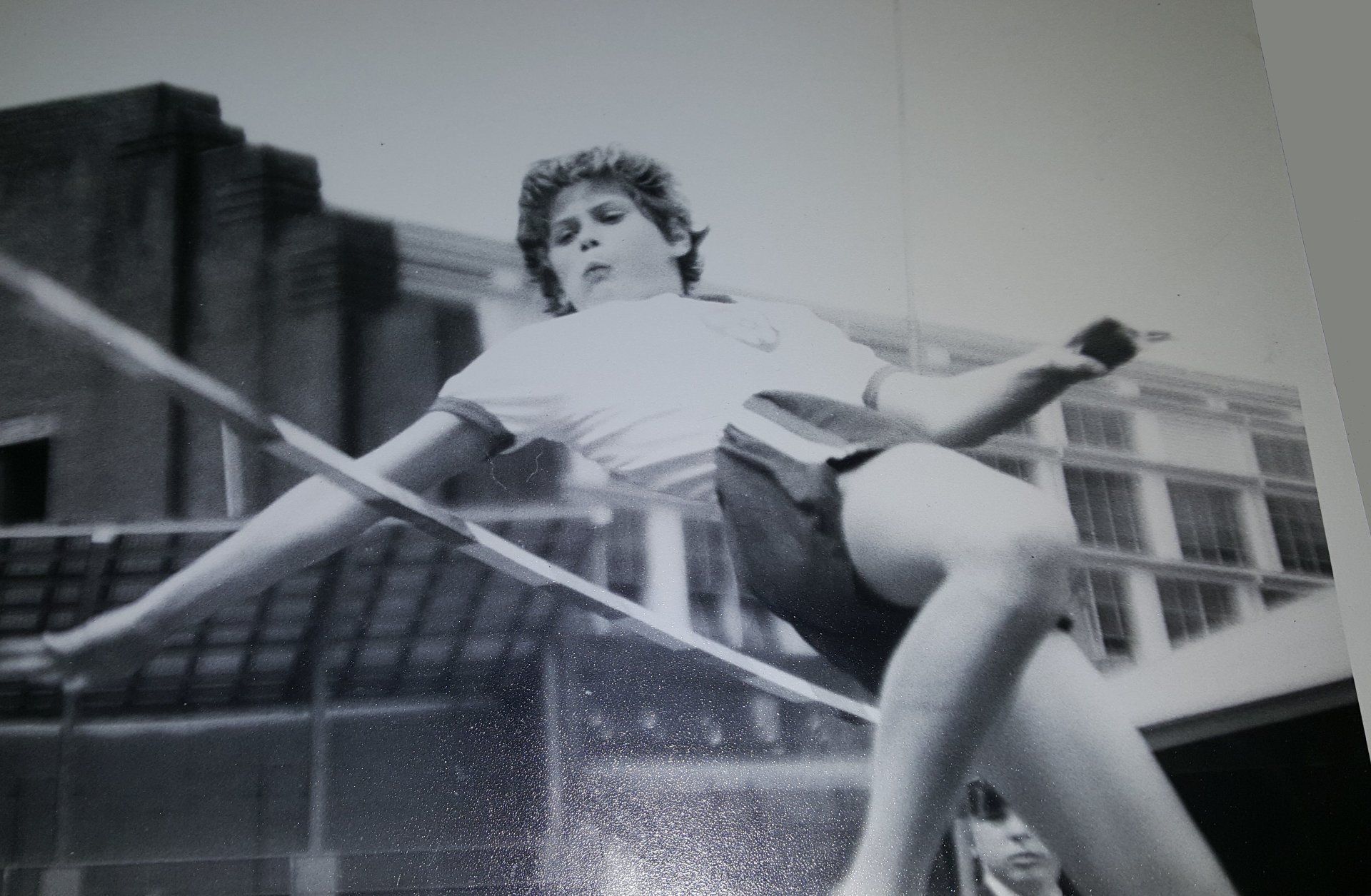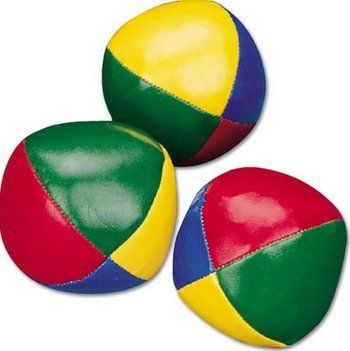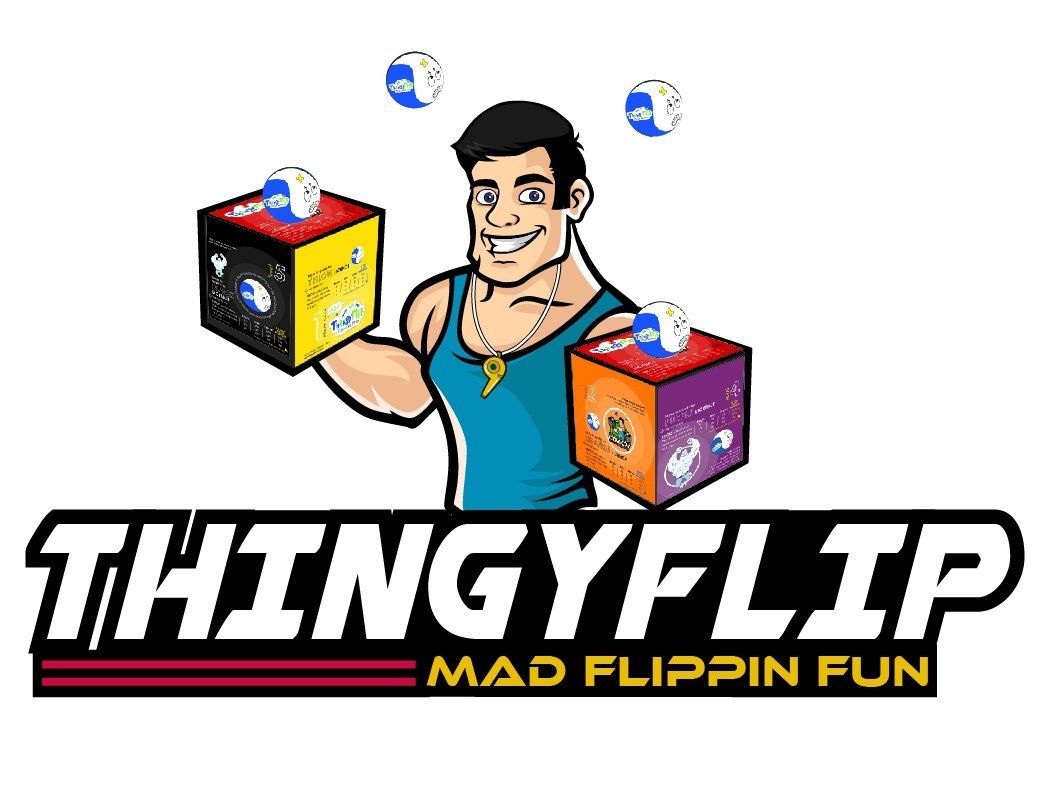

Thingy Flip Inventor and Founder - Dominic See
'The Thingy Flip is my passion. I believe it can help children learn faster, as I know juggling helped me so much growing up.'
Read the full story below
about how learning juggling skills helped Dominic do better academically at school. Plus how this links to increased brain grey matter and the invention of the Thingy Flip.
Our Story
Thingy Flip was created to meet a need for engaging hand-eye coordination games
for kids. The mission is to increase kids brain power and develop their skills in a fun
way. Imagine all the new brain pathways needed to learn to catch on all sides of
each of your hands. This is what is possible with the Thingy Flip as you no longer
simply catch with an open palm but you twist to hit all 5 sides of the box which
takes added focus and skill!
With the increased use of devices such as laptops, tablets, smartphones, and
gaming consoles many kids simply don’t develop good hand-eye coordination skills.
This means they can be missing out on developing skills and challenging their brains
in new, dynamic ways. It is astonishing how important these skills are, with some
studies linking learning these types of skills with increased brain gray matter, which
we discuss in more detail below.
A way to record children’s and young people's Motor Skills Development!
The Thingy Flip is the first Hand-Eye Coordination Grading (HECG) system. Check out our
grading system (we call them Licences) which is fun and rewarding for the kids, but is also a way to monitor their progress and development.
It is of course important that children learn the essential skills of literacy and numeracy at school which is already heavily tested and graded throughout their school years. We can see how important this aspect of development already is in the education system here:
https://education.nsw.gov.au/news/latest-news/biggest-education-shake-up-in-30-years
However, what about their hand-eye coordination and motor skills? Sure, some kids might
be considered good at sports and others not so much. Some scores are recorded for their
athletic achievements, if they participate. But, imagine if it was considered an integral and
normal part of the curriculum? We think this is so important! We discuss brain development and its connection to motor skills and learning later. It is all linked, and this is part of the reason Thingy Flip was invented. We want to bridge that gap so that kids start participating more in physical learning and take some time off the devices.
The Beginning: Dominic’s Story
Founder and Inventor, Dominic See, was inspired to create the Thingy Flip after
going through his own turmoil at school when he was a kid. The Thingy Flip was
born out of this past pain combined with a flash of inspiration, some almost 50 years
later.
Dominic struggled in school academically. During primary school he had such low
self esteem because he felt so behind all the other kids. He had consistent failing
grades (E’s and even F’s) and really hated being at school. On the flip side though,
Dominic was always naturally a great sportsman. He proudly jumped 2 metres in
high jump and was a 1st XV rugby player. However, it did not help his lack of
confidence from his poor concentration and results in class. Struggling with
dyslexia and diagnosed hyperactivity, it seemed so hard to focus. The words
on the page seemed to blur before his eyes whenever he tried to concentrate.
It
seemed futile and so frustrating. He would take any excuse to cause disruption in
class to distract from the classwork which seemed impossible to complete.
However, when he was around 9 years old he became obsessed with learning to
juggle. Dom had tried when he was younger but it was always too hard. Not this
time though, he was determined. He learned how to juggle 3 balls and got better
over the following couple years. Something interesting happened once he started
juggling regularly. He found that his grades dramatically improved and rather
than completely failing, he started to get C’s, D’s and sometimes even B’s. This
might not seem like much to some, but it was a huge improvement. He still recalls
how he was actually able to concentrate in class again. From this his confidence
grew and he became a lot happier, and a lot less disruptive in class!
What he experienced back then stayed with him for life and eventually came the
flash of inspiration to create this unique game. His personal mission is to help not
only kids who are struggling like he did, but all children and young people to develop
new skills and improve their cognitive abilities in a fun and easy way. Dominic’s
ultimate goal would be to see IQ levels rise in the next generations, rather than
potentially fall as some studies are suggesting 1.
Why the Thingy Flip?
Now, research has shown juggling actually increases grey matter in the brain 2. Could
this be why it helped Dominic do better in school? He feels there must be a link!
Dominic knew that juggling was a pretty hard skill to learn and not all kids would
dedicate the time to master it. From having the first hand experience of such a
noticeable improvement at school, as well as learning about the current research in
this area, he created the Thingy Flip. He invented something that provides similar
skills to juggling, but that is easier
and includes hundreds of engaging games that
kids love.
The Research that Inspired the Thingy Flip
IQ levels seem to be decreasing and it is suggested it could be from environmental
factors, not so much genetics 1. Although, it has also been suggested by some that
perhaps it could be the IQ tests that are not accurately portraying intelligence either.
It is hard to be certain what exactly could be causing this apparent decline in IQ test
results. However, to think that we are declining over time is a concern! Could it be
from our changed lifestyles with most kids spending all of their free time hooked on
devices and not out playing for hours on end, like they would have a couple decades
ago?
These thoughts were enough to get Thingy Flip Inventor and Founder Dominic,
motivated to help kids develop skills in a fun way that could hopefully keep
intelligence levels from declining!
There have been quite a few articles written around the results of the study on
declining IQ levels by Bratsberg and Rogeberg 1
and the potential implications. If you
are interested, we have posted some further reading below of different perspectives
on these fascinating findings.
https://www.psychologytoday.com/au/blog/feed-your-head/201809/people-are-becoming-less-smart-what-can-we-do-about-it
https://www.sciencealert.com/iq-scores-falling-in-worrying-reversal-20th-century-intelligence-boom-flynn-effect-intelligence
https://slate.com/technology/2018/09/iq-scores-going-down-research-flynn-effect.html
During around the first three years of life, children are very much right-brain
dominant, as has also been linked to attachment theory and why they seem largely
governed by emotions 3. The right-sided brain function is very much around
emotional, intuitive experience and perception. It is thought that around ages 4 - 7,
things shift and the left side becomes more involved 3. The left hemisphere is linked
to logic and reasoning.
Not all children develop the same of course and not all will display the noticeable
change from the predominant right hemisphere learning styles to the left at each
age. Those children who function more from the right brain may find it harder to
concentrate and pay attention to details. They are often more creative, impulsive and
abstract in their thinking.
The left hemisphere of the brain is in charge of the right side of the body. The right
hemisphere of the brain, the left side of the body. However, studies suggest that
both sides of the brain (and the corresponding side of the body) contribute unique
mechanisms that assist motor function and learning 4. It seems both sides are
required for different but complementary functions 4.
This is one of the reasons why we feel it is important to get kids using both sides of
their brains by practising and learning new skills through motor actions such as
catching and throwing with the Thingy Flip. It seems currently, the predominant
tasks kids have to face are using their devices (phones, tablets, gaming consoles, or
laptops) at school and at home. We feel it is important that they also get back to
doing a lot more physical playing which will challenge their hand-eye (brain)
coordination too.
So what is the link to juggling skills and IQ levels decreasing?
A very interesting study in 2004 showed an increase in the grey matter after
participants learned to juggle 2. In this study, all participants were inexperienced in
juggling. They were separated into two groups: the juggling group, and the non-
juggling group. The juggling group was given 3 months to learn how to juggle 3
balls. MRI scans were taken of all the participant’s brains at the beginning of the
study. Once those in the juggling group had become skilled, namely that they could
achieve at least 60 seconds of 3-ball cascade juggling, they had another MRI scan of
the brain. A third scan was also performed 3 months in which time the jugglers had
not been practicing or adding to their learned skill set.
Group comparison showed that the juggler group showed an increase in brain gray
matter in the mid-temporal area (hMT/V5) from the first MRI scan compared to the
second scan. This decreased in the third scan, which was the period when they
stopped practising juggling. The non-juggler group showed no increase in gray
matter over the same period.
You can also read a good summary of the study here:
https://www.ox.ac.uk/news/2009-10-12-juggling-enhances-connections-brain
So considering that IQ levels may be decreasing and that juggling skills practice
demonstrated an increase in gray matter, could it be that regular use of a device
such as the Thingy Flip would be beneficial to our brain function? This very question,
along with the Founder’s personal experience, is what lead to the development of the Thingy Flip.
Our Ultimate Goal
At Thingy Flip, we hypothesis that people who use a Thingy Flip regularly will
increase their IQ levels or perhaps more simply, increase their cognitive abilities. Yes,
it’s a big call. We would love for you to join us in our mission to further discover the
links between learning new skills, particularly those involved in hand-eye
coordination like the Thingy Flip, with increased cognitive abilities. The best part is
that it isn’t grueling training. It is fun and there are so many tricks to master and
games to play!
References
1
Bratsberg, B. and Rogeberg, O., 2018. Flynn effect and its reversal are both environmentally caused. Proceedings of the National Academy of Sciences, 115(26), pp.6674-6678.
2
Draganski, B., Gaser, C., Busch, V., Schuierer, G. al, e. 2004, Changes in grey matter induced by training, Nature, vol. 427, no. 6972, pp. 311-2.
3
Schore A.N., 2000, “Attachment and the regulation of the right brain”. Attachment and Human Development.
2000;2(1):23-47. doi:10.1080/146167300361309
4
Mutha, P. K., Haaland, K. Y., & Sainburg, R. L. , 2012. “The effects of brain lateralization on motor control and
adaptation”. Journal of motor behavior, 44(6), 455–469. https://doi.org/10.1080/00222895.2012.747482

Juggling helped my eye hand coordination, concentration, maths, spelling, writing, and most importantly confidence.








